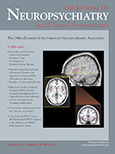Analysis Spectrum of Normal and Ataxia Purkinje Cell Output and Classification Using Artificial Neural Network
To the Editor: Dysfunction of the Purkinje neurons leads to lack of motor coordination, or cerebellar ataxia, and impaired motor learning.1 Normal Purkinje neurons fire spontaneous action potentials under basal conditions and inhibit the deep cerebellar nuclei. Purkinje cell output displays high-frequency sodium spikes and low-frequency calcium spikes.2 These frequency bands can be investigated by signal processing tools such as power spectral density. There are explicit peaks related to each frequency band in the power spectral density of Purkinje cell output. Changes in the behavior of the ataxic Purkinje cells can be studied by evaluating possible changes in the power spectral density of their output signal. The frequencies of these peaks are altered in the ataxia condition. The use of the power spectral density is helpful in the recognition of changes in the frequency bands in ataxia conditions. This recognition can probably be helpful in understanding the role of ion channels in power spectral density and the relationship among the activity of ion channels and frequency bands. This is a good method for relating frequency with the activity of ion channels to facilitate an understanding of cerebellar ataxia alternations. The ability of Purkinje cells to generate sodium and calcium spikes in different patterns of activity (tonic or burst) can be investigated by using the power spectral density of outputs. Thus, we propose that changes in the firing activity of the Purkinje cell can be detected by analyzing the power spectral density of the membrane potential. Peak frequencies can be measured by power spectrum analysis. These frequencies are altered in ataxia conditions. It is important to understand which mechanism is responsible for this alternation. The spectral changes in the ataxia condition can be caused by the change in ionic currents. Thus, analysis of the power spectral density of the Purkinje cell output may represent changes in the ionic currents, and we think that an early diagnosis is possible by using power spectrum analysis.
In addition, the frequencies of the peaks are appropriate features for differentiating normal cells from ataxic cells and can be used in the analysis and classification of the Purkinje cell output.
Peak frequencies of the Purkinje cell output can be used by an artificial neural network classifier to classify the signal into normal or ataxia groups. The proposed classifier may be used as a tool for helping clinicians control cerebellar ataxia.
An artificial neural network is a set of mathematical neurons that is an effective classification tool, and it is used by different researchers in various biological systems for classifying disease states from normal ones.3,4
We think that a classification based on power spectral density analysis would better define different types of Purkinje cell outputs, which may be similar during the onset of disease. Use of this classification system helps in the segregation of different Purkinje cell outputs. Therefore, cerebellar ataxia will be better diagnosed, and early diagnosis is possible.
1 : Computational analysis of calcium signaling and membrane electrophysiology in cerebellar Purkinje neurons associated with ataxia. BMC Syst Biol 2012; 6:70Crossref, Medline, Google Scholar
2 : A signal processing analysis of Purkinje cells in vitro. Front Neural Circuits 2010; 4:13Medline, Google Scholar
3 : Neural network–based classification of normal and abnormal pulmonary function using spirometric measurements. J Mech Med Biol 2007; 7:151–161Crossref, Google Scholar
4 : Artificial neural network based ECG arrhythmia classification. J Mech Med Biol 2009; 9:507–525Crossref, Google Scholar



